

 |

This photo of
Hoe Hall is believed to show the Grounds family at Hoe
Hall. According to Carthew's The Hundred
of Launditch, Thomas Grounds (1772-1827) bought
the house in 1813. The family moved from the Hall at
some time between 1872 and 1881 and thereafter rented
it out, selling it finally around 1920.
Pevsner's The Buildings of England describes
the front as 'Early c19 façade of grey brick with
giant pilasters and a porch.' However, there's no
mention of the back part of the house with its
octagonal chimneys. English Heritage dates the back to
the 17th century.
In 1845 William Grounds had part of the old house
demolished and the new, larger part added to it. The specification
was exacting,
the work costing £1295 5s 5d. George Harrold was the
contractor.
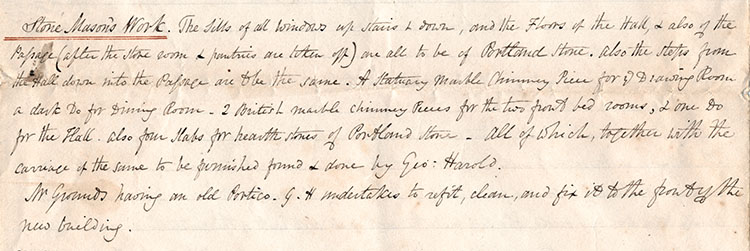
This part of the specification lists the stonework –
sills, floors, fireplaces, etc. It notes that William
Grounds had 'an old Portico' which was repaired and
fitted to the new front of the house.
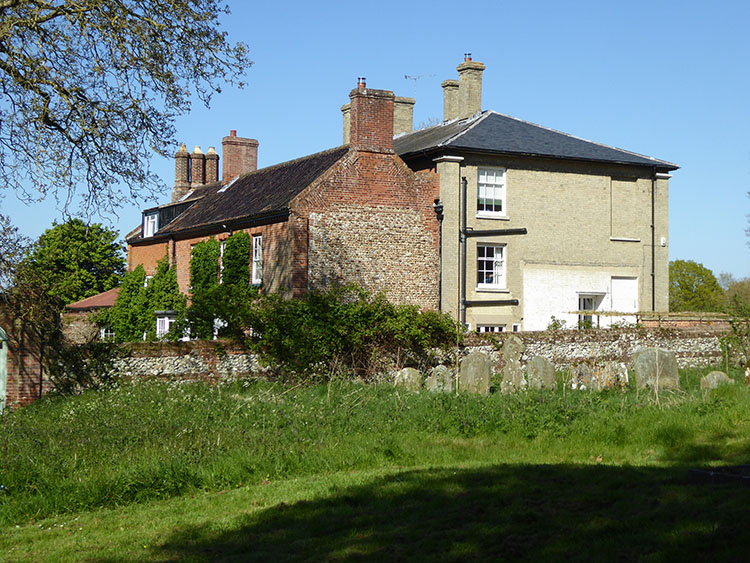
Seen from the churchyard, two phases of the building
are apparent. The painted white area marks the site of
a conservatory, since demolished, which was built by a
tenant of the Hall in 1898. The doorway from the house
was made then.
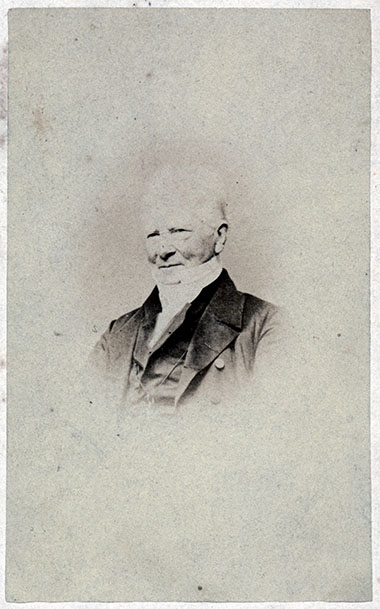
William Grounds photographed by
Brunton of East
Dereham. William
was born in Hoe in
1804, the son of
Thomas and
Margaret Grounds. He inherited the
Hoe
estate on the death of his
father
in
1827. In 1830 he
married Ann Hester
Freeman Sutton at
Stanfield church.
He
died in 1866 and was
buried in Hoe
churchyard.
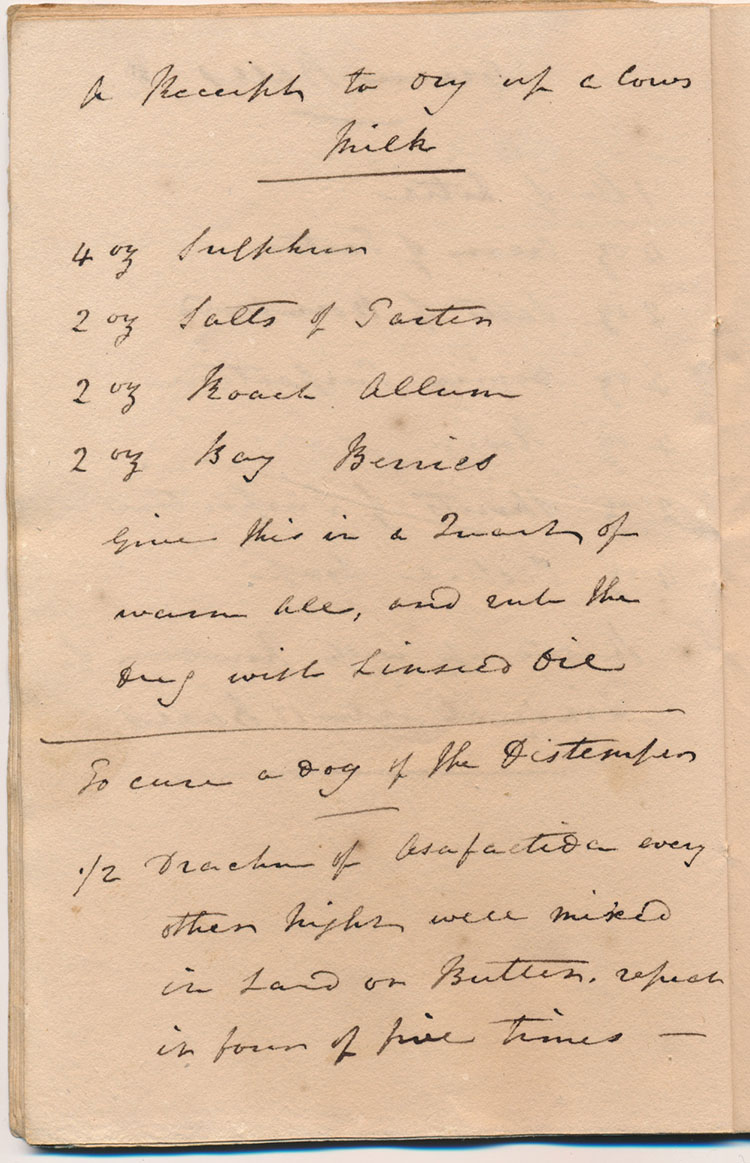
William Grounds kept a receipt book containing
remedies for a wide range of human and animal
complaints. Here he notes 'A Receipt to dry up a
Cows Milk' and another 'To cure a dog of the
Distemper':
1/2 drachm
of Asafoetida every other night well mixed with
Lard or Butter, repeat in four or fives times.

Grounds'
account with his wine merchant, Edward Barwell of East
Dereham, July 1854. A pipe is a barrel containing
about 120 gallons/550litres.

Joseph Perkins, who worked as a groom
for
the Grounds family at Hoe Hall.
In the census of 1861
his age is 65. The death of a
Joseph Perkins is
recorded in 1865, most likely
him, so this photo is
probably from the 1860s.
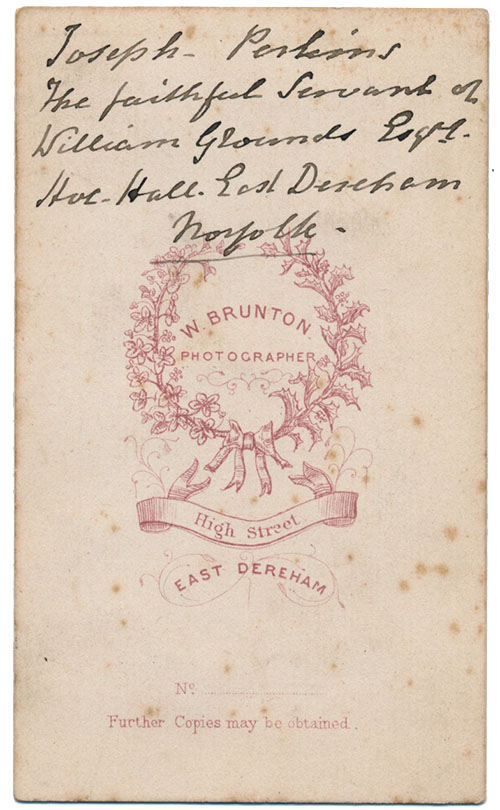
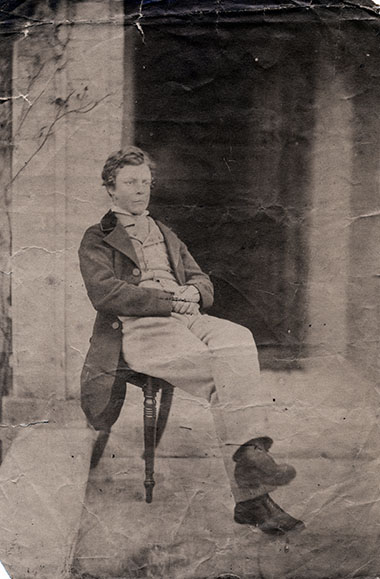 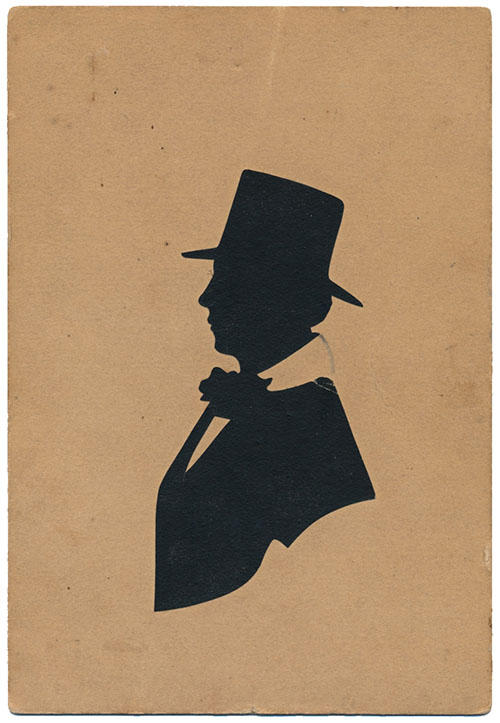
William's
son, Thomas Byam Grounds, photographed aged sixteen,
in 1858. He attended Eton College. The
silhouette is dated
1859.
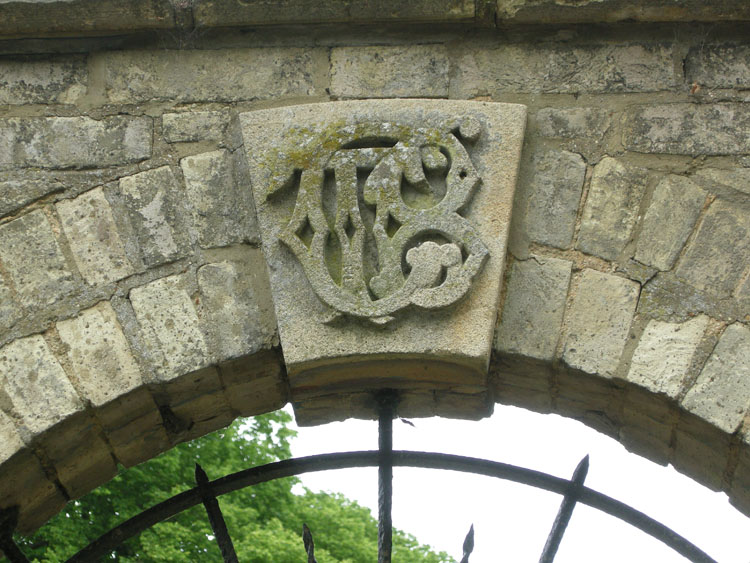
TBG – the monogram of Thomas Byam Grounds on the
gateway to the churchyard, formerly an entrance to
the Hall garden, since the churchyard was not
extended until 1920. The device also appears on the
gables of numbers 1 & 2 Hoe with the date 1872,
at which time
he was thirty years old. Thomas inherited the estate
from his father, William, in 1866. An earlier Thomas,
probably his great-grandfather, was churchwarden
in 1785.
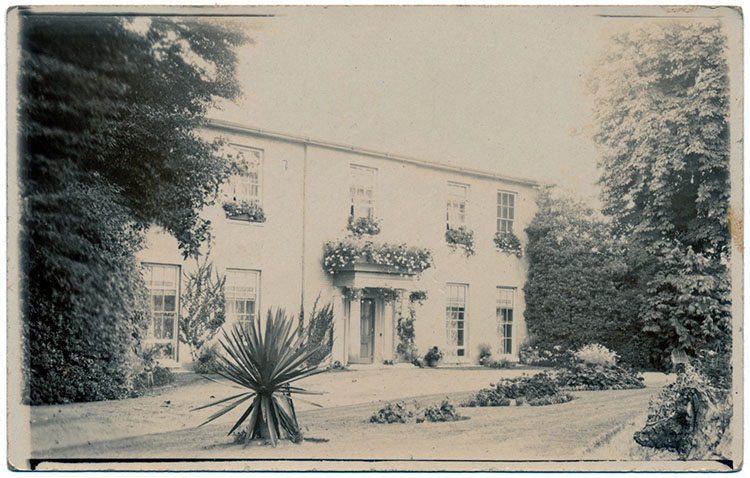
The Hall
in flower! The neat beds and the prominent exotic plant are
characteristic of Victorian gardening.
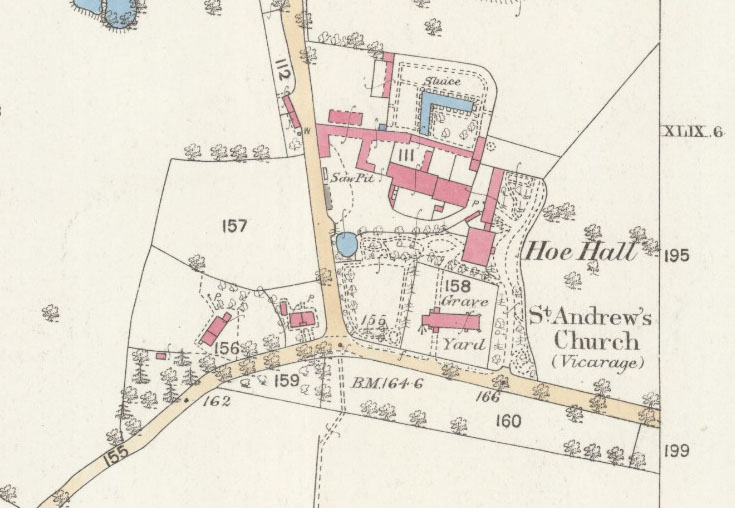
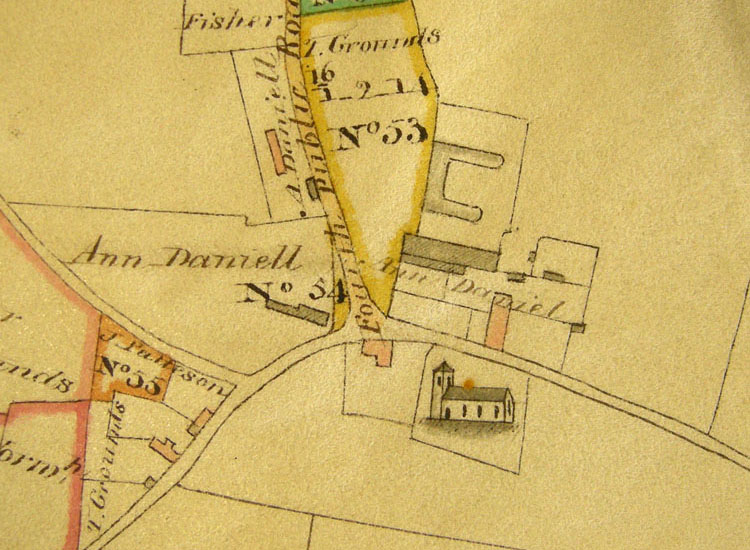
The Ordnance Survey map of
1882
(above) shows the gardens
laid out
with paths and planting
extending
around the area which later
became
part of the churchyard. The
large pond
in the farmyard was probably
for the
working horses and a saw pit
is
marked. Comparing the the
L-shaped
pond with the 1811 Inclosure
map (left)
shows it reduced from what
looks like a
three-sided moat.
In 1873 the implements, live and dead
stock of the farm were sold, and the Grounds family
moved away from Hoe around that time. The catalogue
of the sale lists the purchasers of the various
lots, amongst them Samuel Norton, whose
father, also Samuel, had farmed
Manor Farm until 1855.
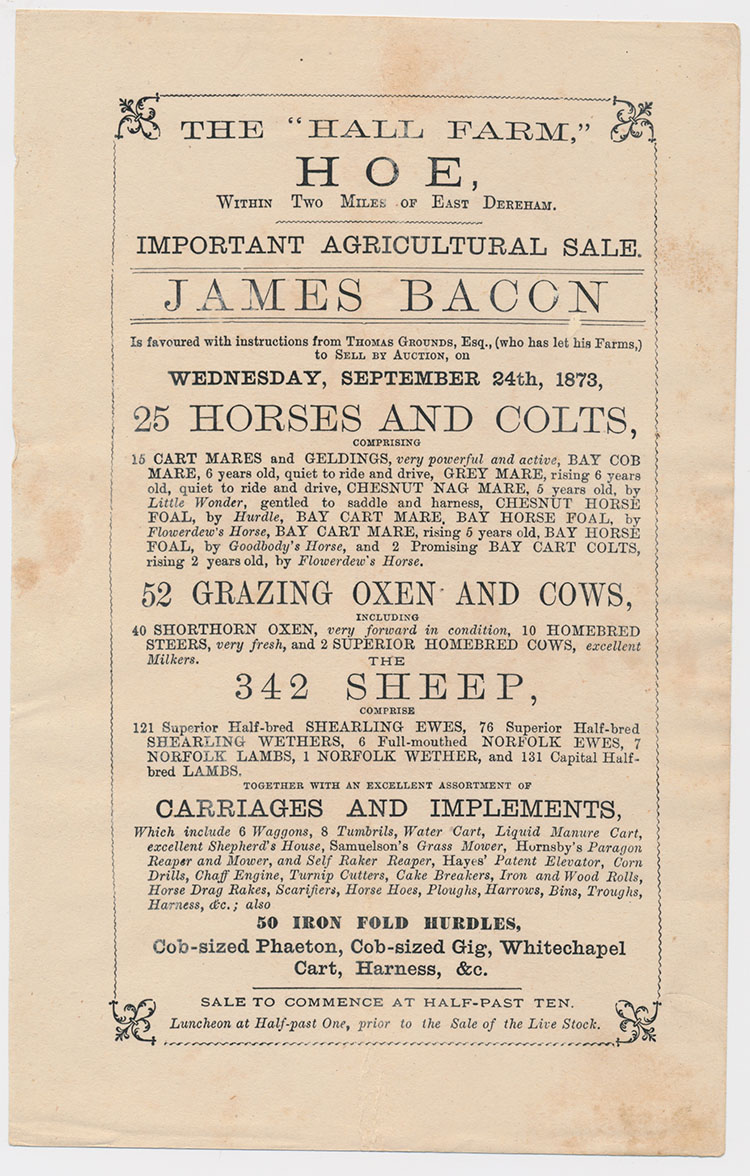
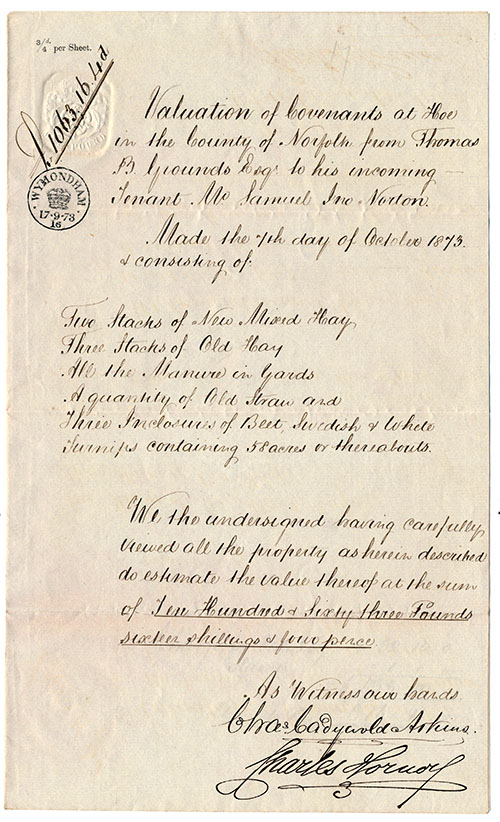
Samuel jr
then took on the tenancy of
Hall Farm
having spent over £500 on
equipment and
stock. He also took on
standing and
harvested crops valued
at over
£1000.
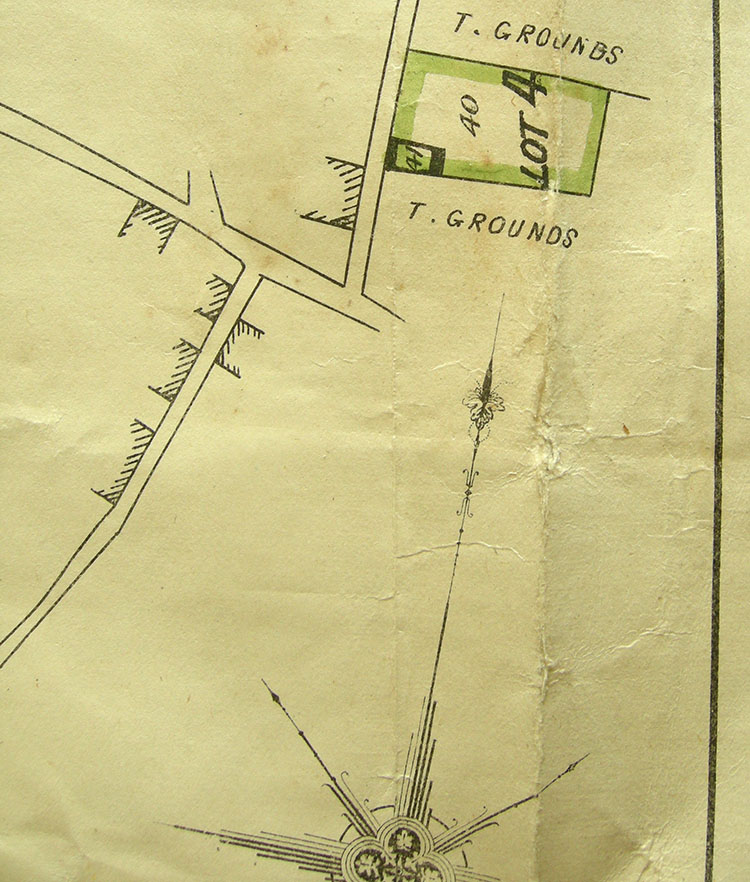
However, Thomas
Grounds continued
to add to his
estate whenever land
became
available. When Azariah
Waters sold
Hoe Lodge in 1890,
Grounds'
agent bought two lots that
filled in gaps: 'We think
it will be an
advantage if these lots are
added to
your property and therefore
purchased
at the sale'.
Lot 4 is a meadow near
Spring Farm;
the little building numbered 41 housed a
smithy, according to Peggy
Butterfield.
[Map Courtesy of Norfolk
Record Office
BR 379/Hood,
Vores & Allwood,
14/03/1980/Box
39]
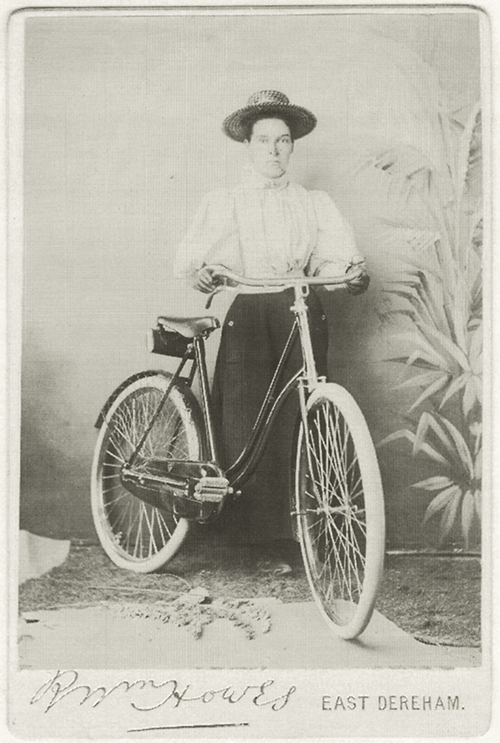
Faith Evelyn Wigg (1874-1899) was the daughter of
Charles Heyhoe Wigg and his
wife Ann (née Grounds).
Faith Wigg's death is recorded at
Lowestoft, at such an
early age that she may
perhaps have suffered
from
tuberculosis.
Charles Wigg is recorded
in the 1881 census at Hoe
Hall as a farmer of 700
acres employing fourteen men
and six boys.
Thomas Byam Grounds,
Ann's brother, was visiting Hoe
Hall at the time of the
1881 census. In the census ten
years earlier he
had been resident at Hoe Hall with
his
widowed mother Ann.
Charles Wigg's wife Ann
died in August 1889 aged 53
and he ceases to be the
tenant at Hoe Hall. He went to
farm at Mowles Manor,
Etling Green, near Dereham.

John
Roots had taken on the farm tenancy by
February 1893.

More
bad weather in July 1893.
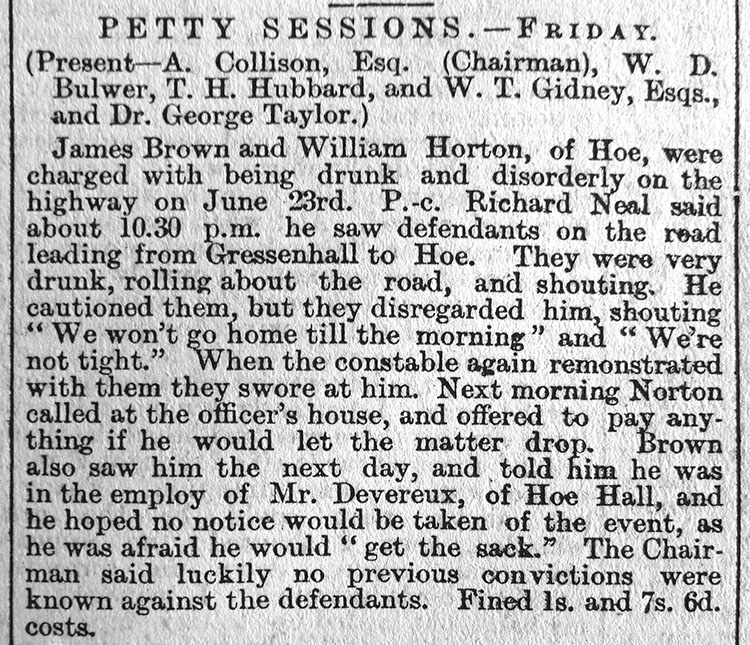 In
July 1895 the Hall tenancy
appears
In
July 1895 the Hall tenancy
appears
to have changed hands
again, to a Mr
Devereux, whose
employee James
Brown was worried
he might be sacked
for being drunk.
In 1900 Thomas Byam Grounds let the Hall
and the 368-acre farm
to George Bagnall
for a term of eight years*
at a rent of £450 per annum. George was most
likely to be the first
person in Hoe to have owned
a car. J. J. Wright,
engineers in Dereham, were
agents for a wide range of
makes including Ariel,
better known later for
motorcycles. The Wright
company records show the
sale of a car in 1899 to
George Bagnall of Hoe Hall.
It was probably a Quadcycle,
costing 120 guineas.
*Lease at Norfolk
Record Office MC 468/13
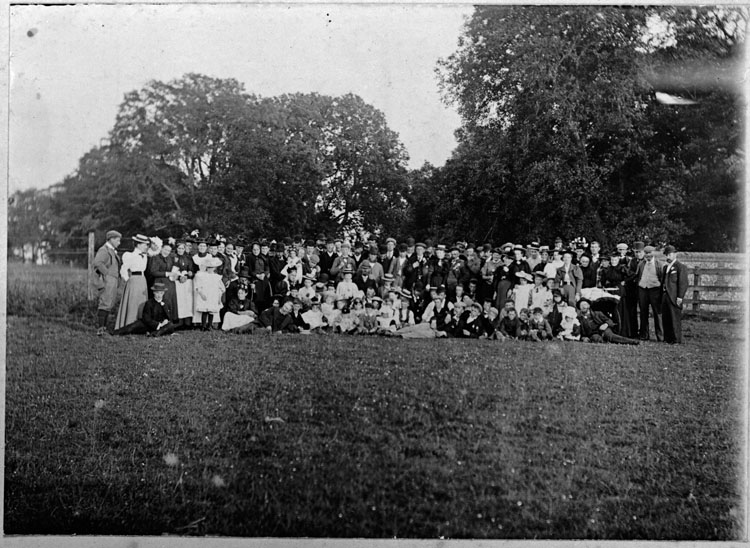

Two intriguing
photographs from the early 1900s. The
location is the same in both and is
thought to be in Hoe but hasn't been
identified. Names of several Hoe
residents present, including Peggy
Butterfield's Barker grandparents, are
known. Peggy Butterfield described the
photographs as being of 'the entire
staff of the Hoe estate'. She identified the smart
man at the extreme right of the
upper picture as Samuel Norton, the
father of her step-father Cyril
Norton. Samuel died in 1903, giving
a latest date for the pictures. Very
similar photographs were taken in
other Norfolk villages to celebrate
the coronation of 1902 and 1911 (see Discovering
Old Norfolk, … the Photographs of
Tom Nokes by Susan Wright
[Halsgrove, 2011] ).
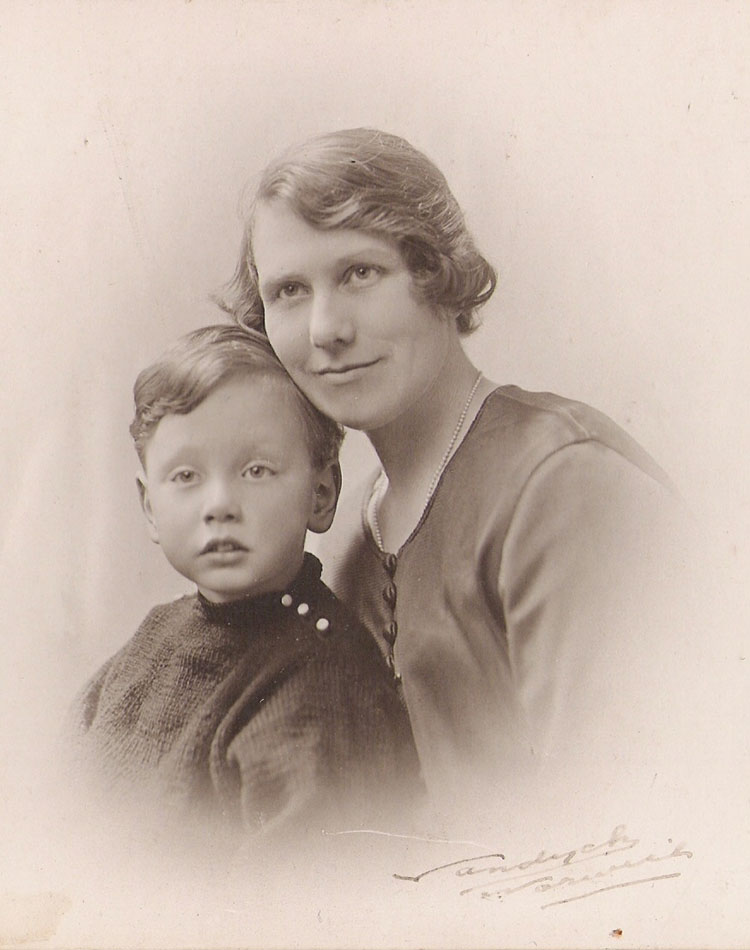
George
and Elizabeth
Bagnall
and their children George Barry and Kathleen
were
living at Gorgate
Hall in 1891 where, according to the
census, George was a Warwickshire born
farmer.
Above: Elizabeth and George Barry.
Elizabeth Bagnall, née Hyatt, was from
Birmingham. Both her mother, also
Elizabeth, and her sister Eliza are buried
in Hoe churchyard. They died within months
of each other, Eliza
aged 46 and Elizabeth 82, in
1899 & 1900.
 
Kathleen and Reginald St Vincent Bagnall.
Reginald fought with the County of London
Yeomanry during WWI having first enlisted
whilst in Canada in 1914. After the war he
went on to farm in Norfolk.
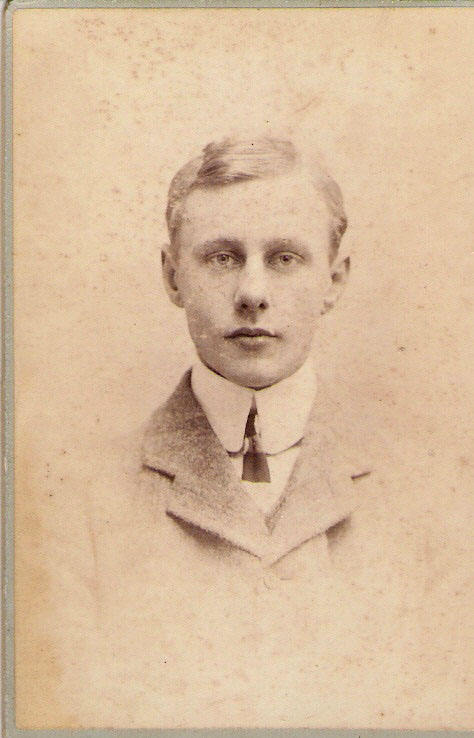 George Barry Bagnall as a young man.
George Barry Bagnall as a young man.
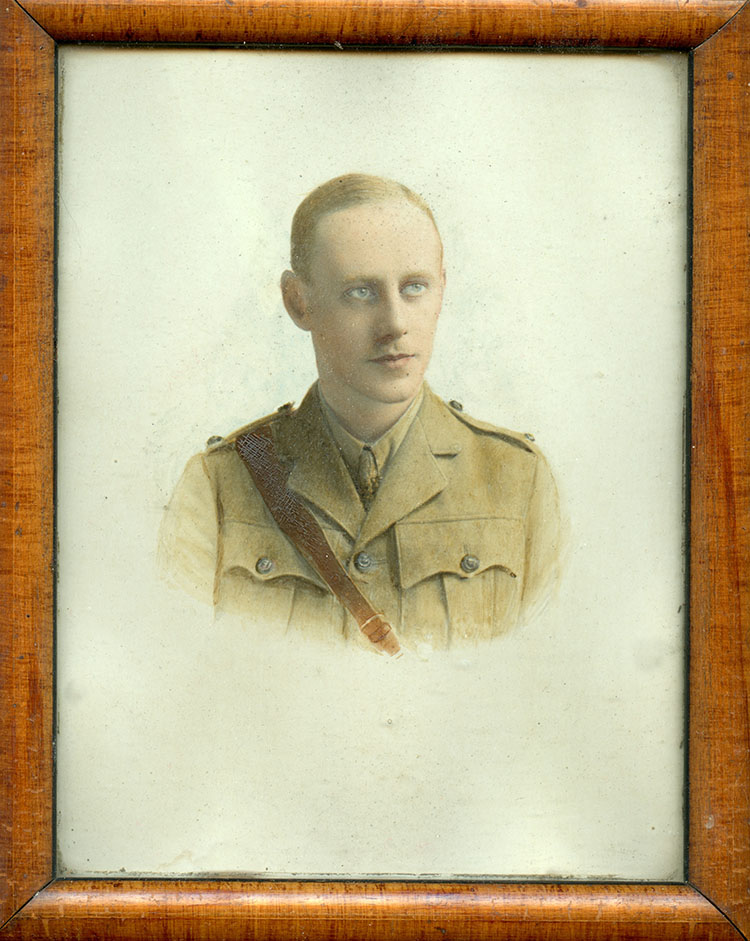
 George Barry died in a fiercely
George Barry died in a fiercely
fought battle east of
Arras in April
1917. He is
commemorated in
Hoe church.

1920s
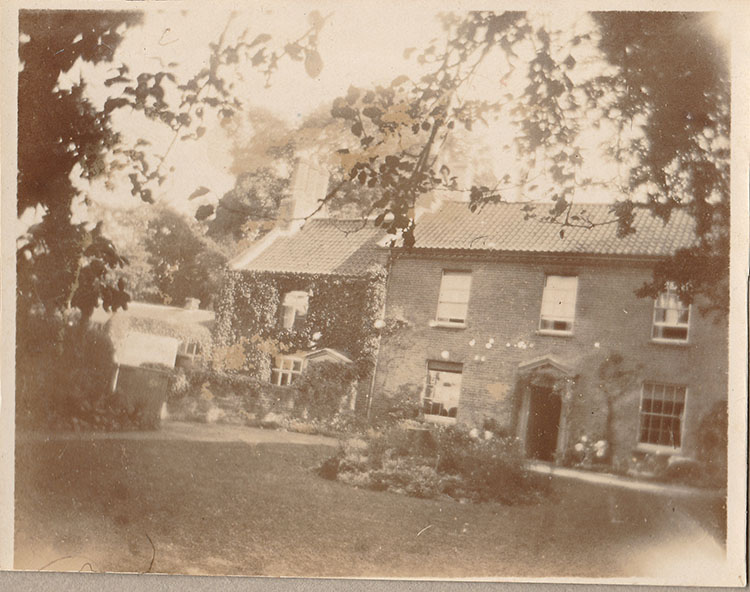
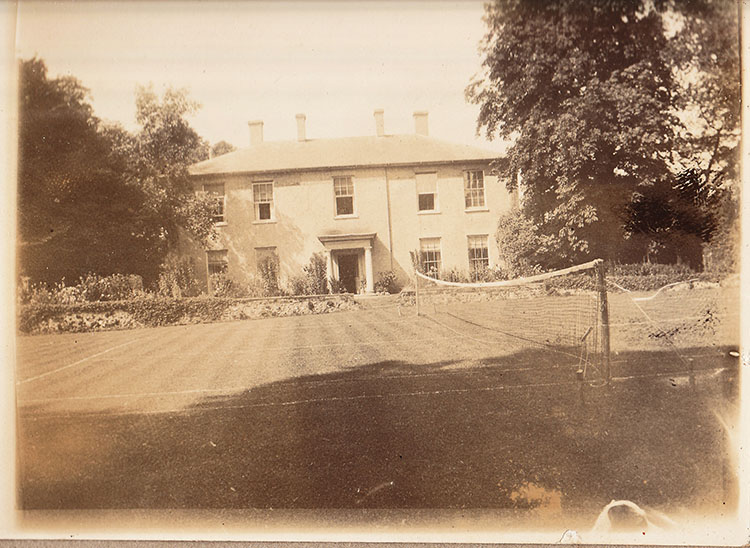
Hoe Hall
photographed in the early 1920s, when it was let to
the Brundle family.
Hoe Hall as a Boarding School
Ernie Tovell, in his recollections of working in
Dereham and surrounding villages in the 1930s, in How We
Lived, (published
by the Mid Norfolk
Family History Society, 2022)
fills in one of the gaps in the Hall's history…
Well
Boring by Hand
Now I must
go back to Oldfields (a firm of Dereham builders)
for work. I know when the wells get short of water
we had to work on wells, boring by hand in those
days. You could tell when you were getting near to
water, as you used to listen on a machine to see
if you could hear it. …we used to work at Mr
Keith’s at Swanton Morley, and Hoe Hall when it
was a boarding for Gentlemen’s sons. It was run by
Mr Garnier, what I remember. He died and his widow
married Major Wormald and one of the Barclay
family moved into Hoe Hall.
We done a
lot of work when they moved. I remember when the
maids got (there) we used to have tea morning and
afternoon. Some of those halls were good places to
work for different reasons.
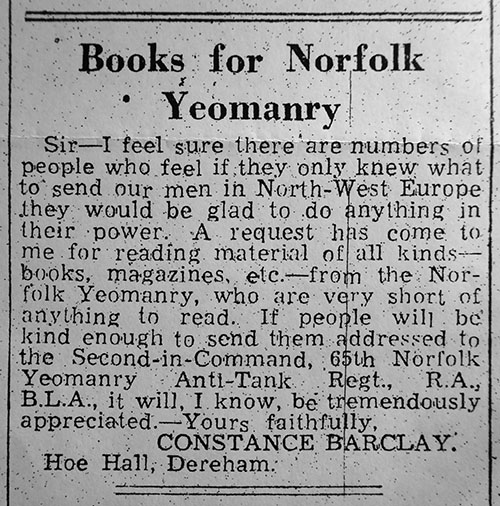 Dereham Times, 3 February 1945.
Dereham Times, 3 February 1945.
During the 1940s the Hall was
tenanted by the
Barclay family.
On 24
March 1945, the Dereham
Times reports
"Great Record of the
Norfolk Yeomanry –
Officers and Men in Grand
Heart Now
Bound for Berlin".
It continues: "The history of
the Norfolk Yeomanry was
outlined … by the
second-in-command, Major J.J.
Barclay, M.C.,
of Hoe Hall, Dereham,
grandson of its founder,
Colonel H.A. Barclay, of
Hanworth Hall. Family
association with the regiment
is continuous.
Major Barclay's father,
Lieut-Col. J.F. Barclay,
also of Hoe Hall, having
fought with it in the
Great War, serving for a
period as C.O. …
Major Barclay … won his M.C.
at Villers-
Bocage in Normandy … ."
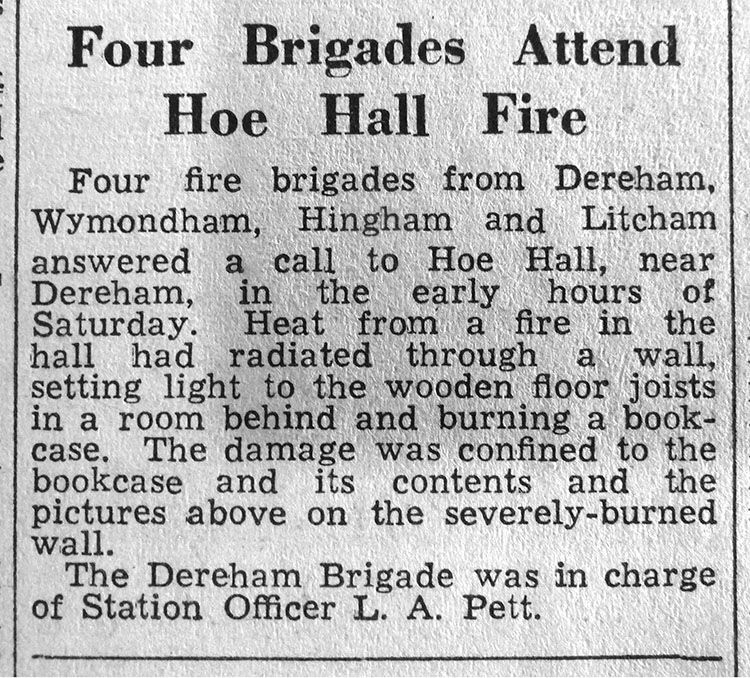 December 1950.
December 1950.

Hoe
Hall was divided and let to two families
in the 1950s, the Standleys and the
Gowings. Tennis at Hoe Hall: (standing)
David Standley and Anne Abbott (from the
Chestnuts), Ian Harper and unknown.

Newspaper
photograph from 1960.
 December
1966.
December
1966.
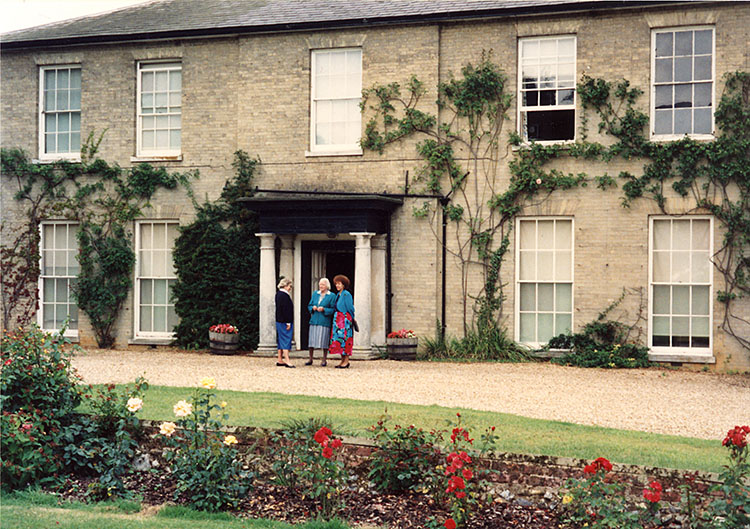
Penelope Keith, Eve
Abbott and an American visitor
whose mother had had relations
in Hoe, outside Hoe Hall.

In 1975 the award-winning short
film Leaving Lily was
shot locally by Graham Baker
(see The Angel page). Hoe Hall
appears in the opening sequence.
The Hall farm

This
is a very jolly group, thought to have
been taken at Field House farm,
Swanton Morley, in the early 1940s.
Back row, left to right, are Cecil
Nunn, Ted Butters snr, Albert Dawson,
Joseph Brooks, Charlie Holmes; front
row: Ivy Butters, Stanley Sutton,
Winnie Butters, unknown, Sid Dack.
Field
House sold for £11,000 with about
900 acres when the Bylaugh estate was
broken up in
1917.
E.
C. Keith lived at Field House and
farmed Hoe Hall farm in the 1940s when
this picture was taken. Most of the
people here lived in Hoe.
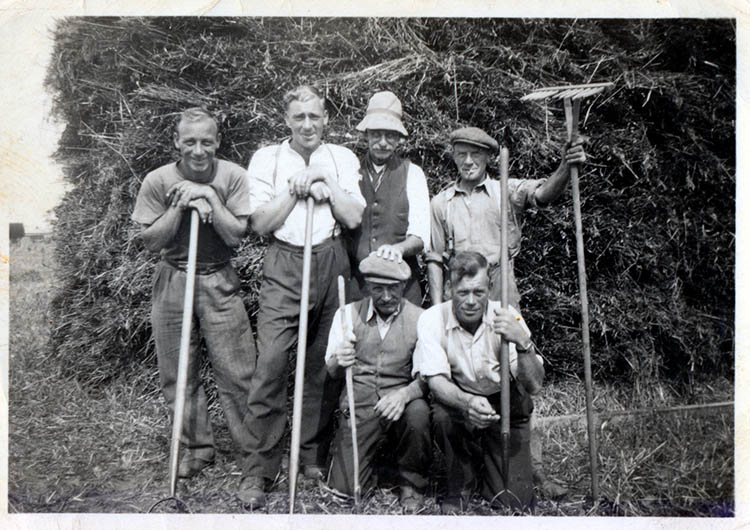
Ted Butters (second from left) and mates
at haytime.
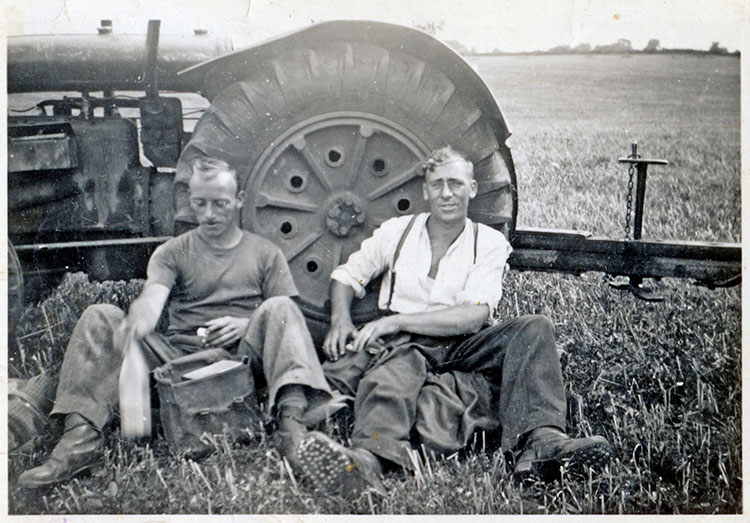
Snap – Ted Butters on the right.
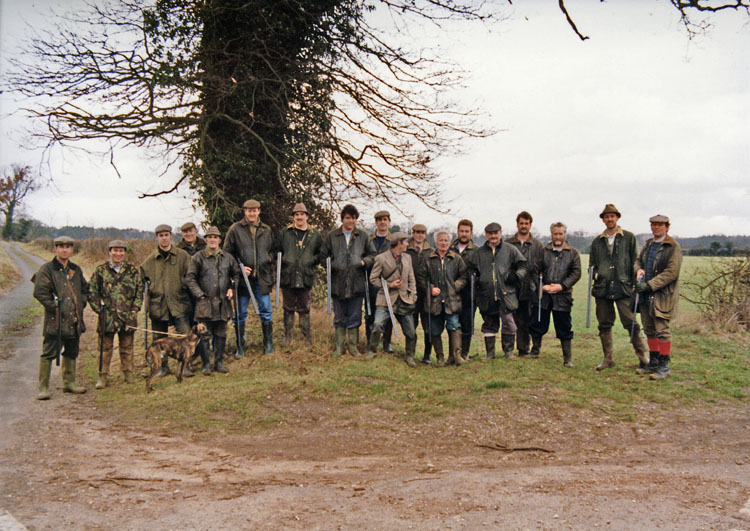
A shooting party on Ayers
Lane. Cliff Hudson (extreme right)
worked as Keiths' gamekeeper for many
years.
|
|